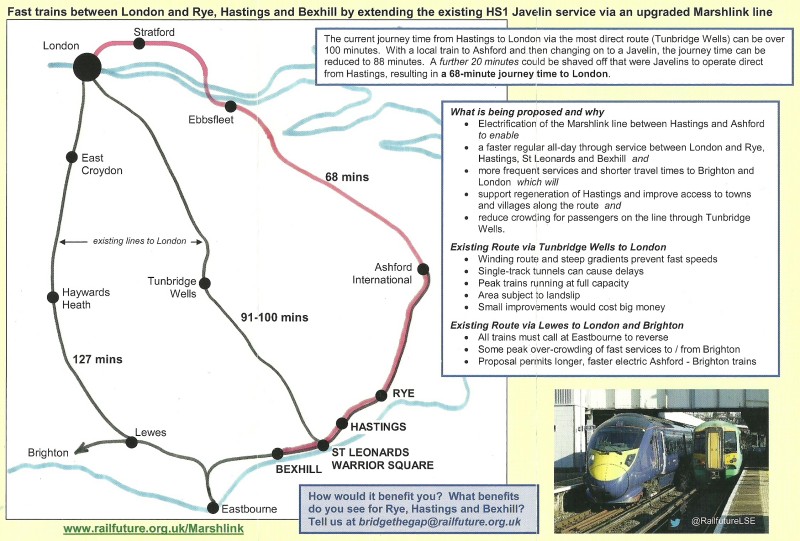More jobs will come to East Sussex if High Speed trains run through from Ashford to Rye, Hastings and Bexhill, claims a new report. The new service could bring more visitors, new businesses, more jobs and make the area “less remote” says the report on economic benefits prepared for the three local councils – East Sussex. Hastings and Rother.
However the Government said in July that, while the High Speed extension should be included in the Kent Route Study due next year, options for funding will only be considered for the period from 2019.
Since then a number of major Network Rail projects elsewhere in England have been reported as significantly over-running in terms of both costs and timing and Network Rail’s long term programme of work is now under review.
Economic benefits in East London and the Thames Gateway, as well as the Olympics and the Bluewater shopping centre, were very much in mind when the Eurostar and High Speed (HS1) services were introduced from London St Pancras station, stopping at Stratford and Ebbsfleet, but the commuter services using the HS1 route have also clearly benefitted Kent’s coastal towns.
Congestion on existing commuter routes into London from the coast via Tunbridge Wells and Lewes may also be another factor which will be taken into consideration.
If implemented though, through services to London – without having to change trains at Ashford – could cut up to 30 minutes off current journey times and mean London was only 55 minutes away from Rye.
Bexhill MP Huw Merriman, who chaired the meeting launching this report prepared by consultants Mott MacDonald, said it was essential the whole community got on board behind the High Speed proposal as there were clearly wider economic benefits in addition to the straightforward improvements to the railway system.
However he ducked a question about the timetable for this happening.
The consultants stressed that East Sussex is very dependent on visitors (some 9-10 million annually) and that a high proportion of the population is retired or economically inactive.
The main benefit therefore would be to attract new businesses, or expand existing ones, as well as attracting more visitors, but little mention was made of outward commuting – to central London or indeed the Thames Gateway or North Kent.
Stuart Harland, from the Marsh Link Action Group (MLAG), asked what were the specific benefits for Rye, but was told the figures covered Rother as a whole, and were not broken down.
Also, as a key factor in the scheme is reduced travel time, adding in more stopping stations (like, for example, Winchelsea or Appledore) would affect the savings.
However the meeting ended on the note that Network Rail have to sort out their priorities first and the Government will have to consider its longer term expenditure plans.
Image: railfuture.org.uk



